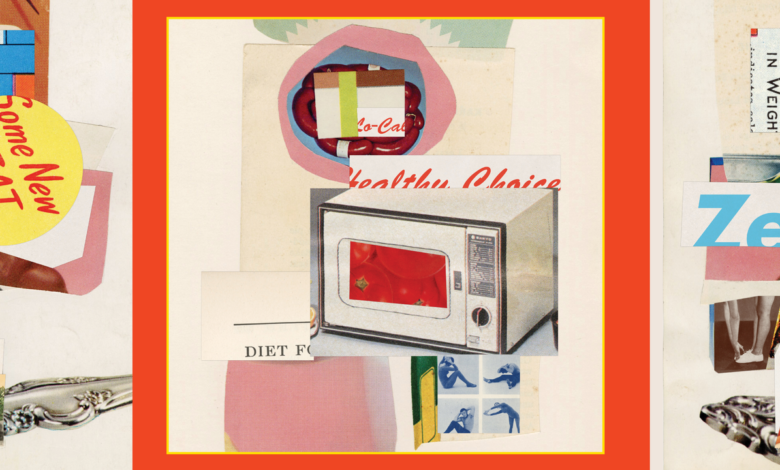
“I’m like everybody else,” says ConAgra CEO Mike Harper as he walks into a private airplane hangar. “I lead a busy life.” In the 1989 commercial Harper tells the camera that after he had a heart attack he couldn’t find “healthy food that was really great-tasting.” So he invented Healthy Choice. Cut to a glamour shot of the low-fat, low-sodium, low-cholesterol frozen dinners: a sectioned oval tray with gravy-covered sirloin tips, a side of baby carrots, potatoes, and a fruit-topped dessert. By the end of the spot, Harper is piloting his little blue propeller plane off the runway.
In the three years following that ad, Healthy Choice would rake in $1 billion in sales. And it was hardly alone. Lean Cuisine, Diet Coke, Crystal Light, Bud Light: Diet food became a juggernaut in the 1980s thanks to a winning combo of government influence, food tech, and good old-fashioned societal pressure to be thin. And in the years following, the industry would only grow. We don’t like to call it diet food anymore, but in 2020 foods with a dietary claim made over $100 billion.
From the moment in 1898 when J.H. Kellogg introduced Toasted Corn Flakes to get our digestion on track and help stave off the urge to “self-pollute” (masturbate), we’ve looked to food to make us healthier, more virtuous, and, yes, thinner. Has it worked? Not really. So why do we keep expecting it to?
What was going on in the 80s? (Other than leotards)
Let’s crack open a can of Diet Coke, put on those leg warmers, and step back in time for a moment. In 1977 a Senate committee released a report telling Americans that they needed to cut the fat, salt, and cholesterol (meat, butter, and eggs) in their diet right now—or else. Those types of food, the report said, directly link to heart disease, cancer, obesity, and stroke. It cited evidence that scholars at the time, and today, said is flawed. The report drove home the idea that taking control of our diets meant taking control of our health. “For those who are overweight,” the report said, “the best protection against heart disease is weight reduction.”
Later the U.S. surgeon general and the World Health Organization chimed in with their own low-fat reports, every major newspaper and magazine covered the news, and suddenly all over America, fridges were stocked with watery skim milk and margarine. “From 1984 through the 1990s, dietary fat was increasingly blamed not only for coronary heart disease but also for [weight gain] and obesity,” writes Ann F. La Berge in the article “How the Ideology of Low Fat Conquered America.” By swapping your milk, the thinking (but not the evidence) went, you’d reduce your chances of heart disease—and your waistline.
In response to these reports, the same companies who’d sold us fat, sugar, and salt for decades quickly pivoted to selling such delicacies as Lean Cuisine, Healthy Choice, Stouffer’s Right Course, The Budget Gourmet Slim Selects, Campbell’s Le Menu LightStyle, and Molly McButter (cholesterol-free butter-flavored sprinkles).
Jenny Craig launched. Cooking Light magazine debuted. Jane Fonda’s famous workout VHS tapes sold millions. Oprah dragged a Radio Flyer wagon full of animal fat onstage and said, “I’m gonna live on broccoli now.” In a 1983 Glamour magazine survey, 76 percent of women said they were “too fat” when 45 percent of those same women were considered underweight. Seventy percent of Playboy playmates were underweight, according to a study that went to the trouble of examining the waist-to-hip ratio in 240 nudie centerfolds. Deaths from eating disorders reached an all-time high. In the ’80s, writes food scholar Claude Fischler, people “dreamed of being thin, saw themselves as fat, and suffered from the contradiction.”





